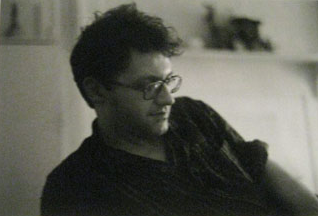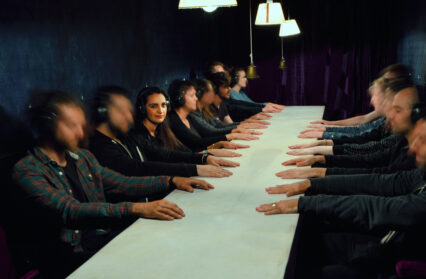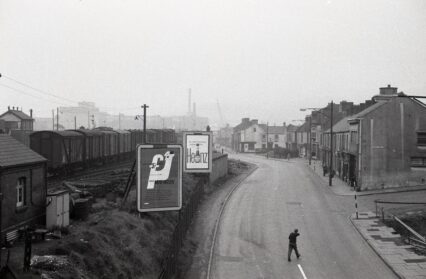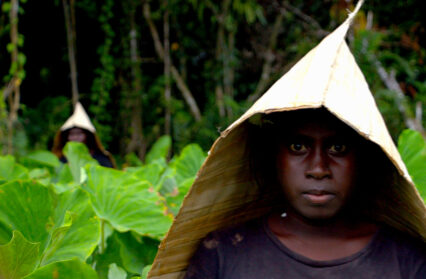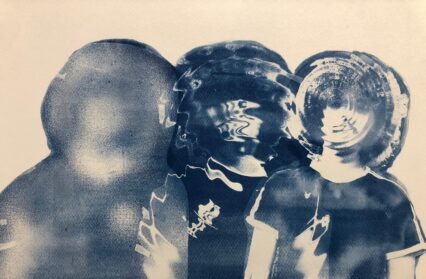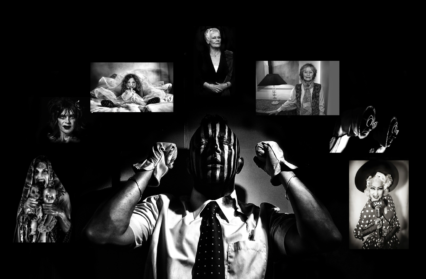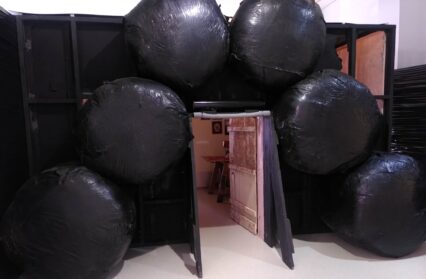In her introduction to the Saul Leiter retrospective, currently showing at London’s Photographers’ Gallery, the exhibition’s co-curator Brigitte Woischnik is adamant in her view that the history of colour photography will need to be re-written to take account of Leiter’s pioneering work in the field during the middle decades of the last century. After witnessing the work of this dynamic colourist at first hand it’s impossible to disagree with her authoritative verdict.
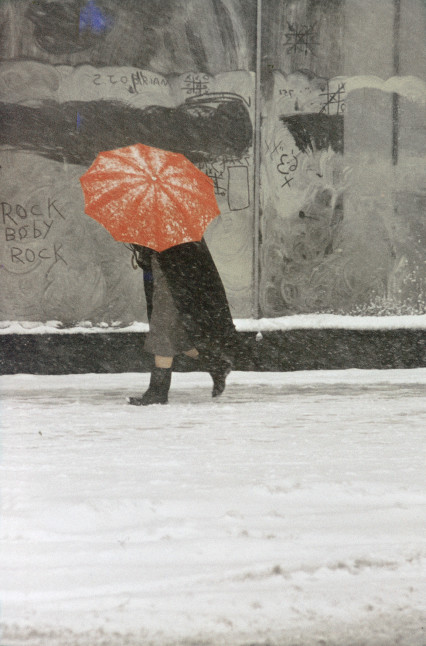
Aside from its magnificent display of radical colour photography, Brigitte Woischnik and Ingo Taubhorn’s all-encompassing exhibition collects together a generous number of Leiter’s vintage black and white photographs, a small representation of his paintings and sketchbooks as well as a delightful selection of fashion spreads for Harper’s Bazaar, where his unique photography accompanied such splendidly titled articles as ‘The Light of Summer’, ‘The Secret of Paris’, ‘Good Manners’ and ‘The Neck up, Coiffures and Cosmetics’. Incredibly, the exhibition represents only a small fragment of Leiter’s work – The Saul Leiter Foundation has catalogued 3,000 paintings, several thousand photographs and multiple boxes of, as yet, undeveloped negatives that Leiter simply could not afford to get printed!
Leiter left Pittsburgh for New York shortly after the Second World War determined on becoming a painter, however he was soon pounding the beat of his East Village neighbourhood, photographing a multitude of shoe-shiners, sign-painters and window-shoppers in stripped-down black and white, and, all importantly, in vivacious colour too. More than twenty years before The Museum of Modern Art held its landmark exhibition to promote the cutting-edge work of the New Colour Photography School, Leiter had almost single-handedly revolutionised the art-form, creating a body of work which the curator and critic Martin Harrison later tagged “Urban Pastoral”.
In 1953, Edward Steichen featured twenty-three examples of Leiter’s black and white photography in the landmark MOMA exhibition Always the Young Stranger and then included 20 more of Leiter’s images in the 1957 MOMA conference Experimental Photography in Colour. The fine-art establishment, though, still shared the prejudice of the famous depression-era photographer Walker Evans that colour photography was merely ‘vulgar’.
It wasn’t until Jane Livingstone, chief curator of the Corcoran Gallery of Art included Leiter in her 1992 book The New York School: Photographs 1936 -1963 that his trailblazing colour photography began to find acceptance. The Howard Greenberg Gallery in New York hosted the first exhibition of Leiter’s black and white photographs in 1993 and followed up with a critically acclaimed colour exhibition four years later.
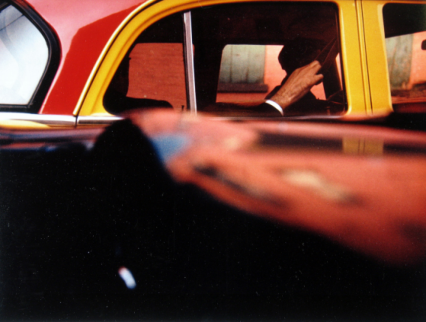
Aesthetically, Leiter rejected the search for ‘the decisive moment’, defining his photography by taking the contrary view – “I like it when one is not certain what one sees. When we do not know why the photographer has taken a picture and when we do not know why we are looking at it, all of a sudden we discover something that we start seeing. I like this confusion.” To achieve that end, he deliberately distorted the reality of his images by using expired Kodachrome film, muting and vitiating his colours in the process. He brought an abstract painter’s sensibility to the medium of colour photography; the effect was disorienting and captivating in equal measure.
The hundred or so photographs on display in Retrospective, beginning with his austere black and white images and concluding, as might be expected, with the uncurbed radiance of his colour photography, best exemplified by the final exhibit Taxi (1957) seldom deviate from this abstract perspective; Kiss (1952), an unobstructed close up of a couple’s open air embrace being, perhaps, the sole exception.
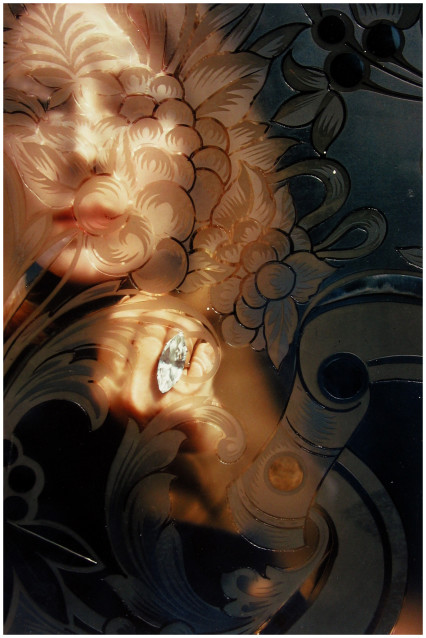
Clusters of photographs shot from user-unfriendly angles and in extreme weather conditions that are bound to deceive the eye, remind us just how Leiter sought to mitigate the clarity of his own camera; the faces of his subjects are either half-glimpsed between overlapping reflections – Walking (1956) partially concealed behind misted or decorated windows – Soames Bantry, Nova (1960), or obscured entirely behind tilted hats and rapturously coloured umbrellas – Purple Umbrella (1950’s), Red Umbrella (1957 and 1958). Distant, solitary figures are meshed into impressionistic, anonymous blurs by the sweep of falling rain – Wet Window (1960) or quarantined from each other altogether by the metal shadows of New York’s transport systems – Kutztown (1948), From the El (1955).
Leiter’s painterly sensibilities enabled him to weave those transitory moments into a cinematic tapestry that aspired to find meaning in the commonplace. By imbuing the orthodoxy of a city’s commercial and communal rituals with a delicate romanticism, he was somehow able to fashion a rare beauty from the familiar. He remained, though, unconvinced about the magnitude of his achievements to the end. In the opening scene of Thomas Leach’s 2012 documentary In No Great Hurry: 13 Lessons in Life with Saul Leiter he’s happy to downplay his own importance in the grand scheme of things declaring “I’m not carried away by the greatness of Mr Leiter”. Visitors to this enthralling exhibition may well beg to differ!
The Saul Leiter Retrospective is at the Photographers’ Gallery, London, until April 3rd.


